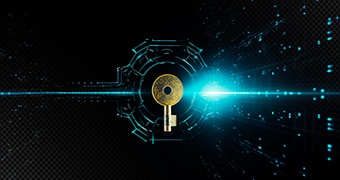We are living in a world where artificial intelligence (AI) is transforming eve....
Can People Be Considered Assets?

When we hear the word "asset," a variety of ideas come to mind. Often, we associate it with something of value, something important to us personally, to our homes, or to our businesses.
In the context of organizations, an asset is typically defined as an item, resource, or entity that contributes to achieving organizational objectives and supporting service delivery. The nature of this value can vary significantly across different organizations, industries, and stakeholders.
Can People Be Considered Assets?
A human being or a person cannot be considered an asset like tangible fixed assets such as equipment, because people cannot be owned, controlled or measured for future economic benefits in money terms, unlike physical assets.
However, people are crucial to the functioning of any organization. The performance, maintenance, and value of physical assets all depend on human contribution. Without people, even the most refined machines or processes would be useless.
Consider this scenario: If a company loses its reputation, it might lose business. But if it loses its employees, who will reestablish that reputation? Who will drive innovation, deliver services, or build relationships with customers? Evidently, people play a central role in generating value, even if they aren’t listed on the balance sheet as assets.
The Value of Human Contribution
Referring to individuals as "assets" can seem impersonal. However, recognizing the value of their knowledge, motivation, and skill sets is vital. Without this recognition, organizations risk undervaluing one of their most vital contributors to success.
The growing influence of intangible assets, like expertise, innovation, and intellectual property on economic success, highlights the important role of human capital. Organizations that prioritize employee development, engagement, and well-being are more likely to accomplish sustainable, long-term competitive advantages. Such investments often lead to long-term strategic advantages, enabling businesses to remain agile and competitive in a continually changing world.
Eventually, recognizing and nurturing human contribution is not just beneficial, it is a necessity for building strong and future-ready organizations.
Asset Management: A Strategic Approach
Understanding what creates an asset eventually depends on what drives value within an organization. Regardless of whether an asset is tangible or intangible, managing it effectively is important to unlocking its full potential.
Asset management involves structured practices and strategies for optimizing value, performance, and longevity of resources throughout their lifecycle. It ensures that all assets, whether equipment or expertise, are aligned with the organization’s goals and efficiently used.
Furthermore, asset management promotes accountability and transparency by clearly defining roles, responsibilities, and performance expectations. It also encourages continuous improvement by involving feedback, performance reviews, and technological advancements into the asset lifecycle.
Hence, adopting a structured asset management approach is important for maintaining competitiveness, reducing waste, and achieving long-term success.
ISO 55001: The International Standard for Asset Management
ISO 55001 provides a strong framework for implementing an asset management system. It summarizes the requirements for establishing, maintaining, and continuously improving asset-related strategies and operations.
One of its strengths is the flexibility it offers. Organizations can define their own assets, including both physical items and intangible resources, such as data and knowledge. ISO 55001 also promotes a lifecycle approach, clear roles and responsibilities, and continuous improvement.
Applicable across various industries, the standard helps organizations improve efficiency, reduce risk, and make better, evidence-based decisions.
How PECB Supports the Implementation of ISO 55001
PECB offers specialized training programs designed to help organizations adopt effective asset management practices in alignment with ISO 55001.
Whether you are in the beginning of the asset management journey or looking to improve existing practices, PECB training courses help build internal competence, ensure compliance, and drive value across the asset lifecycle.
Currently available training courses include:
About the author
Vesa Hyseni is a Senior Content and Campaigns Specialist at PECB. She is responsible for creating up-to-date content, conducting market research, and providing insights about ISO standards. For any questions, feel free to reach out to her at support@pecb.com.


